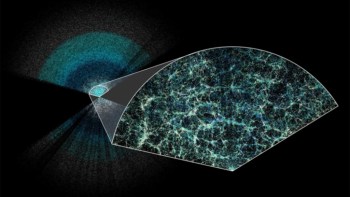Astrophysicists will be scratching their heads following the discovery that three elliptical galaxies seem to contain little or no dark matter. A team led by Aaron Romanowsky of the University of Nottingham in the UK found that the dynamics of the elliptical galaxies could be explained without the need for dark matter, in contrast to the motion of spiral galaxies. The unexpected result questions the widely held belief that elliptical galaxies form when galaxies rich in dark matter collide (A Romanowsky et al 2003 Sciencexpress 1087441 ).
Dark matter was originally proposed to explain why galaxies rotate as though they contain much more matter than astronomers can detect with telescopes. The existence of this invisible mass – and its gravitational pull on ordinary baryonic matter – has become a cornerstone of modern cosmology, but now Romanowsky and colleagues have cast doubt on its existence in certain galaxies.
For three elliptical galaxies, the researchers measured how the rotational speed changed from the centre of the galaxy to its outer edge. To do this, they used the 4.2-metre Herschel telescope in La Palma to look for planetary nebulas – shells of gas ejected by sun-like stars at the end of their lives. The spectra emitted by these shells contain well-known absorption lines, which are red-shifted for nebulas receding from Earth and blue-shifted for those approaching us. The degree of this Doppler shift enabled the researchers to calculate the velocities of hundreds of nebulas, and therefore their galactic neighbourhoods.
To their surprise, Romanowsky and colleagues found that the rotational speed of the galaxies fell towards their outer edges – a result that Johannes Kepler would have predicted long before the advent of dark matter. In contrast, the rotational speed of matter beyond the visible edge of spiral galaxies remains constant. Astronomers believe this arises from the gravitational effect of ‘halos’ of dark matter around spiral galaxies. Now they must explain why certain types of galaxy appear to be rich in dark matter while others seem to be deficient.
Incidentally, planetary nebulas have nothing to do with planets – the term is a misnomer that dates back to their discovery in 1764.



